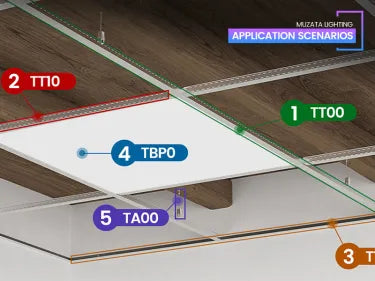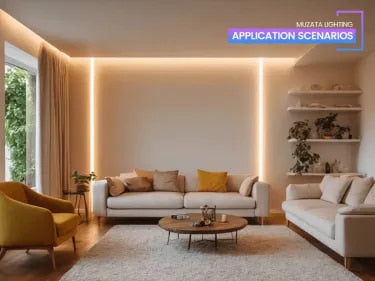TABLE OF CONTENTS
How Do I Choose a LED Strip Channel?
Introduction
LED strip lighting has become increasingly popular for both residential and commercial applications, thanks to its versatility and energy efficiency. However, choosing the right LED strip channel is equally important to enhance the aesthetics, protect the LED strips, and ensure proper heat dissipation. In this blog post, we will guide you through the process of selecting the perfect LED strip channel by considering factors such as channel type and size, material and durability, installation options, light diffusion, practical considerations, application-specific needs, budget-friendly options, and maintenance tips.
I. Importance of LED Strip Channels
LED strip channels, also known as aluminum profiles or extrusions, play a crucial role in enhancing the performance and longevity of LED strip lights. They provide a protective housing that shields the LED strips from damage, dust, and moisture while offering heat dissipation to maintain optimal operating temperatures. Moreover, LED strip channels help to diffuse light and create a more uniform and professional-looking illumination.
 |
 |
II. Factors to Consider when Choosing a LED Strip Channel
-
Channel Type and Size:
- Selecting the right channel type (e.g., surface-mounted, recessed, corner-mounted) depends on your installation requirements and design preferences.
- The channel size should match the dimensions of the LED strips and the desired lighting effect.
-
Material and Durability:
- Aluminum channels are widely used due to their excellent heat dissipation capabilities and durability.
- Consider the thickness and quality of the aluminum, as well as additional features like impact resistance or UV protection if required.
-
Installation Options:
- Evaluate the available mounting options, such as adhesive backing, screw mounting, or magnetic mounting, based on your installation surface and ease of mounting.

III. Understanding Light Diffusion and Aesthetics
-
Opal vs. Clear Covers:
- Opal covers provide better light diffusion, resulting in a more uniform and soft glow.
- Clear covers offer a more direct and intense lighting effect, ideal for highlighting specific areas or objects.
-
Effects on Brightness and Uniformity:
- The choice between opal and clear covers can affect the perceived brightness of the LED strip lights.
- Opal covers help reduce individual LED glare and minimize hotspots, creating a more even and pleasing illumination.
IV. Practical Considerations for Installation
-
Mounting Options and Flexibility:
- Evaluate the installation flexibility that each channel offers, such as adjustable angles, bendable profiles, or customizable lengths.
-
Heat Dissipation and Longevity:
- Adequate heat dissipation is crucial for maintaining the longevity and performance of LED strip lights.
- Opt for channels with efficient designs that allow proper airflow to dissipate heat generated by the LEDs.

V. Choosing the Right Channel for Different Applications
-
Indoor vs. Outdoor Lighting:
- Consider the IP (Ingress Protection) rating of the LED strip channel to ensure its suitability for indoor or outdoor use.
- Outdoor channels should have higher IP ratings to withstand exposure to moisture, dust, and other environmental factors.
- IP65-rated LED strip lights are protected against dust ingress and low-pressure water jets from any direction. This rating makes them suitable for outdoor use, where they may be exposed to rain and splashes of water. On the other hand, IP67-rated LED strip lights provide more protection against water immersion than IP65-rated ones. These lights can be submerged in up to one meter of water for up to 30 minutes without damage. This rating makes them ideal for use in wet areas such as swimming pools and bathrooms.
-
Accent Lighting vs. Task Lighting:
- Determine the purpose of your LED strip lights to select an appropriate channel that complements the desired lighting effect.
- Narrower channels can create accent lighting, while wider channels are suitable for task lighting or general illumination.

VI. Budget-Friendly Options and Cost Factors
-
Affordable Materials and Alternatives:
- Besides aluminum, explore cost-effective alternatives like PVC channels while considering their durability and heat dissipation abilities.
-
Long-Term Savings and Energy Efficiency:
- Choose LED strip channels that maximize energy efficiency and work in conjunction with high-quality LED strips to reduce energy consumption and maintenance costs.
VII. Conclusion
Investing in the right LED strip channel is crucial for maximizing the performance and longevity of your LED strip lights. By considering factors such as channel type and size, material and durability, installation options, light diffusion, practical considerations, application-specific needs, budget-friendly options, and maintenance tips, you can make an informed decision. Remember to prioritize safety, aesthetics, and long-term cost savings when choosing a LED strip channel for your lighting project.




